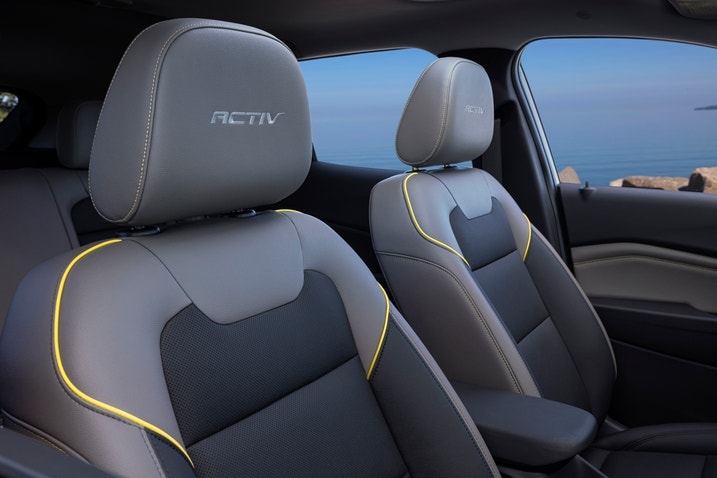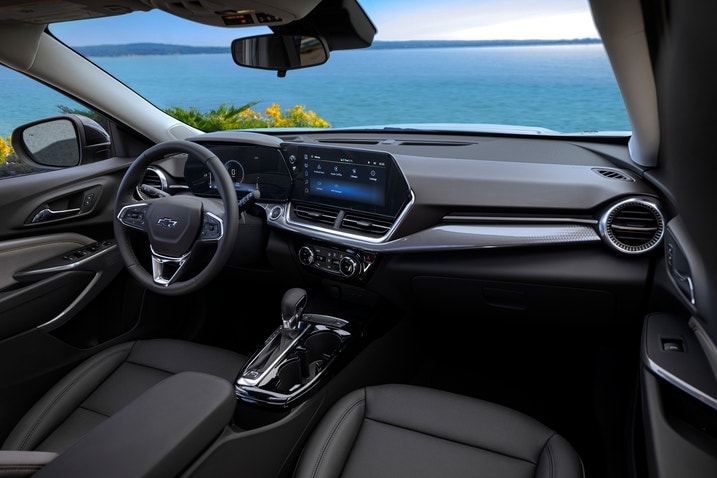- This is an all-new Trax that's bigger than its predecessor.
- Power comes courtesy of a turbocharged three-cylinder engine.
- It boasts new features and a much nicer interior.
Driven: 2024 Chevrolet Trax Is More Than Just Better Than Before
Lots of available tech and a spacious interior at a competitive price
If at first you don't succeed, try again. That seems to be the mantra for the Chevrolet Trax. Chevy discontinued the first-generation Trax — its smallest and least expensive SUV — after the 2022 model year. Truth be told, we weren't broken up about it — time behind the wheel of the previous Trax didn't exactly inspire you to head back to the Chevy dealer when it was time for a replacement, especially when rivals had models that were less expensive, better to drive and offered significantly better tech and features. But notably, Chevrolet is giving it another go with the redesigned 2024 Trax.
The new Trax is significantly bigger than its predecessor in almost every dimension. Overall length is up by 11 inches, and within that a 6-inch-longer wheelbase (the measurement between the front and rear wheels) allows more rear legroom and cargo space. Overall height is the only measurement that's smaller, a likely result from a slightly lower ride height and the new Trax's more sloped roofline. There are also significant changes to the powertrain, interior and technology features.
What's under the Trax's hood?
To keep the Trax affordable, Chevrolet is offering only a single powertrain: a 1.2-liter turbocharged inline-three cylinder making 137 horsepower and 162 lb-ft of torque. Those figures are less than the outgoing Trax and on the lower end for this class. The engine is mounted to a six-speed automatic transmission that sends power to the front wheels. All-wheel drive is not offered on the Trax.
How does the Trax drive?
Chevy's Corvette Z06 could make more power than the Trax even if it were only running on two of its eight cylinders, but the Trax's relatively light curb weight (listed at around 3,000 pounds) means it's peppy enough to not feel slow when moving away from a stoplight or merging onto the highway. With about 300 pounds less weight to move than before, the power deficit compared to the old Trax doesn't seem to matter. Even with four adults in the car, the Trax didn't struggle. The new three-cylinder is much more responsive than the previous four-cylinder, though rivals like the Mazda CX-30 offer more power and quicker acceleration, albeit at a higher price than the Trax. The six-speed automatic is fine, but we noticed some busyness on hilly roads when the transmission would frequently shift.
The Trax, even the sporty-looking RS model, isn't a performance vehicle by any stretch. The steering is quick enough to make parking a breeze (helped further by the Trax's relatively compact proportions), but it lacks any real feedback. If you're looking for a compact SUV that offers a bit more engagement, the Mazda CX-30 might be worth a look, though options can make it a significantly more expensive vehicle than the Trax.
How comfortable is the Trax?
Outside of wheel size, all Trax trim levels are mechanically identical, with visual tweaks and available features separating the trims. That means all Traxes ride about the same, which is overall pretty comfortable. Wheel sizes range from 17 inches on the base LS trim to 19 inches on the 2RS, but there's enough sidewall on the tire and compliance built into the suspension that the Trax absorbs most bumps and imperfections without too much issue. Road and wind noise is mild even at highway speeds.
There's plenty of space in both rows, with four adults fitting comfortably inside without front passengers having to scoot their seats up to accommodate those in the rear. There's lots of headroom, legroom and shoulder room, and decent-size rear windows help keep the back seat from feeling claustrophobic. Both seats offer soft padding, but the seat bottoms in both rows will likely seem a bit too short for passengers with long legs.
How's the Trax's interior?
Chevrolet (and General Motors as a whole) has often struggled when it comes to interiors, often hampering otherwise solid vehicles with cheap, ugly and frankly underwhelming cabins. That's been changing over the past few years, with recent Chevy models from the 2023 Colorado to the latest Corvette offering interiors that are significant steps up over their predecessors. The Trax continues that trend.
There are still hard plastics on the doors, dash and console, but the clean lines and interesting textures on those surfaces make a big difference. The buttons and knobs, too, feel far less cheap than before. Most things are well positioned and easy to reach, though the climate control is set a bit low in the dash. We still question GM's continued use of bright trim on some panels (it can be quite bright when reflecting midday sunlight), but most everything else is an improvement over the last Trax.
We had an opportunity to sample every trim, and even the base LS didn't disappoint. It was missing some of the colorful accents found in the Activ and RS trims, but the overall design and feel were the same. It's telling that Chevy was confident enough to let us behind the wheel of a base-spec car, as automakers generally want to put their best foot forward.
How's the Trax's tech?
The Trax is available with quite a bit of in-car tech, including standard automatic emergency braking, lane keeping assistance with lane departure warning, and automatic high beams. Adaptive cruise control, parking sensors, and blind-spot warning with rear cross-traffic warning are available as options. That's all good stuff on a car in this class, and most of it worked well in our initial testing.
The Trax is available with two infotainment systems, depending on the trim. The LS and 1RS get analog gauges and an 8-inch touchscreen display. The display uses an older software interface but it's still pretty responsive and easy to navigate. It includes Apple CarPlay and Android Auto smartphone integration, both with wireless connectivity.
Trims from the LT up get an 8-inch all-digital instrument cluster and a big 11-inch infotainment screen with a newer user interface. The new system is responsive and well laid out, but the instrument cluster could only show limited information at once. That information could only be changed from the infotainment screen, not the steering wheel like you'd expect. The system has Google-backed software, so navigation is as easy to use as it is on a smartphone.
How's the Trax's storage?
For its class, the Trax's cargo area is massive. At 25.6 cubic feet, it's both significantly larger than before and larger than most other cargo holds in the class. There's room in the rear for a weekend away with four and more than enough room for day-to-day trips to the grocery store. The load floor doesn't adjust, but there's space below it if you really need to tuck some things away. There's no power liftgate, but that's par for the course for this class. The load floor is fairly low too.
Storage up front includes door pockets large enough for a couple of bottles of water, a bin both in front of and behind the shifter and a decently sized center console. We found a couple of handy places to stash a phone, sunglasses or snacks.
How economical is the Trax?
Since the Trax is only available with a single powertrain, all trims get an EPA-estimated 30 mpg combined rating (28 city/32 highway). That's OK for the class, though rivals like the Nissan Kicks and Toyota Corolla Cross offer slightly better EPA figures.
Edmunds says
The redesigned Chevrolet Trax took all the right lessons from Chevy's other recent compact success, the Trailblazer. With a spacious and handsome interior, lots of available features and decent on-road comfort, the 2024 Trax has upped its game and shows that GM's recent successes are no flukes.









 by
by